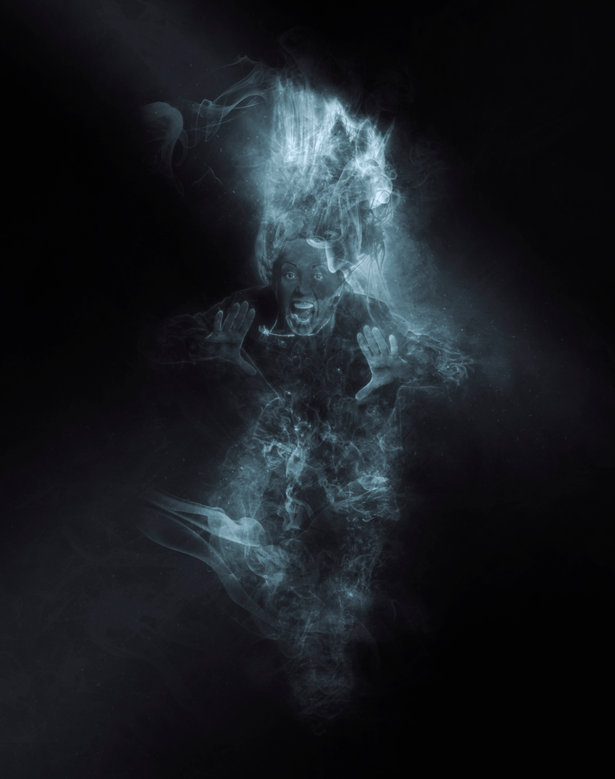 Submitted by Apparitionist on
Submitted by Apparitionist on

Image by andreyuu from http://123rf.com
Halloween is the time of year when interest in the paranormal peaks and people celebrate all things supernatural. Of particular fascination are stories and tales of ghosts and ghouls and poltergists.
The term poltergeist comes from the combining of two German words: poltern (crash) and geist (spirit or ghost). So in other words, a noisy or unruly ghost or spirit. Although less common than traditional hauntings, reports of poltergeist activity dates back to the first century. In modern times the phenomenon has generated several major films and television programmes.
So with this in mind, here are the eight most important things you should know about poltergeists.
1. Parapsychologists can’t agree on what they are
Some parapsychologists view poltergeists as a type of ghost or supernatural entity which are responsible for psychological and physical disturbance. Others believe that such activity originates from “unknown energy” associated with a living person or a location. Sceptics, on the other hand, prefer mundane explanations such as attention seeking, pranks and trickery.
2. Poltergeists tend to prefer women to men
A person-focused poltergeist tends to (but not always) involve a female adolescent who is suffering from emotional turmoil when the activity begins. That said however, not all so called “focal agents” are teenagers. Indeed, William G. Roll, a pioneer in poltergeist research, found the age of people reporting experiences of poltergeist activity ranged from eight to 78 years.
3. Some of the best poltergeists are thought to be fakes
In 1967, at a lawyer’s office in Rosenheim, Germany strange things started to happen in the presence of the 19 year-old secretary Annemarie Schaberl. Paintings and overhead light fittings started swinging, while fluorescent tubes unscrewed themselves and massive spikes in electrical activity occurred. The speaking clock was also called multiple times per minute and furniture was moved. The police, utility company officials, physicists and parapsychologist Hans Bender investigated without explanation. But many believe it was a fake – all due to hidden nylon threads – especially given that the incidents stopped when Schaberl left the firm in early 1968.
4. Poltergeists like to mess with your stuff
Poltergeist activity typically starts with minor isolated incidents. This could include unexplained sounds or familiar objects such as your keys or your phone moving from their usual place. But while poltergeist activity is typically short-lived – manifestations typically lasting around five months – some cases have persisted for several years.
The Chilliwack poltergeist in Canada, for example was active for only two months between 1951 to 1952. During this time the Poltergeist produced loud and violent hammerings on walls accompanied by occasional flying objects. The Brother Doli Case, on the other hand, included a range of phenomena – stains, carvings of images and Welsh words, generally of a religious nature – and these persisted for several years.
5. Experts are still undecided about the Enfield poltergeist
One of the most famous poltergeist cases to happen in the UK involved the Hodgson Family, and their newly occupied council house in Enfield, North London. Between 1977 and 1979 it was the scene of demonic voices, objects moving without explanation, levitation and strange noises. Events focused on the two teenage daughters Margaret and Janet.
Several reliable witnesses observed phenomena – these witnesses included a police constable, a press photographer and investigators from the Society for Psychical. While investigators did discover some evidence of pranks and fakery, it was believed that many of the poltergeist incidents were genuine.
6. Some believe that emotional stress can cause activity
Some ghost hunters and paranormals propose that poltergeists are actually the emotions of troubled individuals – built up during times of stress. This theory, known as Spontaneous Recurring Psychokinesis suggests that this built-up stress then unconsciously projects outwards in the form of mental energy, which effects the physical environment and produces the phenomena attributed to poltergeists. But there is little evidence to support this notion.
7. Others believe they are spirits of the dead
Many people believe that spirits of the dead are responsible for poltergeist activity. This is said to be because people who experience them perceive an underlying intelligence and meaningful communication with an otherworldly being. This view proposes that a disembodied consciousness – or soul – survives bodily death. But again, there also isn’t any compelling scientific evidence to support this view either.
8. But sceptics put a lot of it down to misinterpretation
Misinterpretation is most likely to occur when people believe a place is haunted and they are looking for evidence to confirm this. In this way, a lot of poltergeist activity can actually be attributed to inaccurate perception of natural phenomenon. Take the case of the women haunted by a ticking clock, it was actually discovered that the noise was created by a tiny insect. Other cases such as “the curse of the spinning Egyptian” – an Egyptian statue in a Manchester museum appeared to turn itself during the day – have equally been explained by physical factors such as minor seismic activity, underground streams and even rainfall patterns.
Neil Dagnall, Reader in Applied Cognitive Psychology, Manchester Metropolitan University and Ken Drinkwater, Senior Lecturer and Researcher in Cognitive and Parapsychology, Manchester Metropolitan University
This article is published from http://TheConversation under a Creative Commons License. Read https://theconversation.com/eight-things-you-need-to-know-about-poltergeists-just-in-time-for-halloween-85690 original article.

- 700 reads